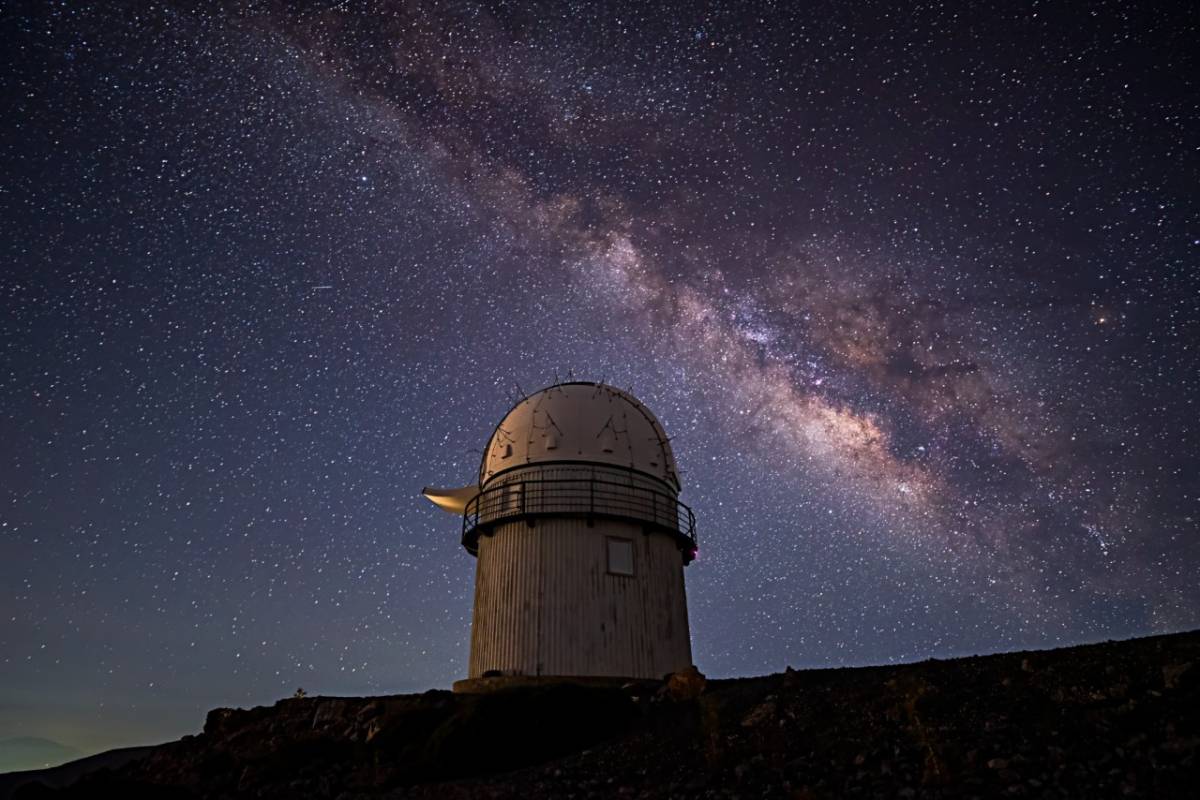
The observatory of Skinakas is located in the center of Crete, on Mount Idi (Psiloritis) at an altitude of 1750 meters. It is 50 km away from Heraklion and 20 km from Anogeia. Its location is ideal, it was built on a large plateau of Skinakas peak. On the north-northwest side of the horizon, there is no higher mountain, so the wind flow is very smooth, without turbulence (winds in Crete are mainly north-northwest) and there is visibility towards Heraklion.
In 1984, the University of Crete, the Foundation for Technology and Research and the Max Planch Institute for Extraterrestrial Physics of Germany joined forces to jointly install and operate a telescope to train students in astronomy and investigate celestial objects such as comets and gaseous nebulae. The impending arrival of Halley's Comet in the spring of 1986 set the time frame for the telescope's installation.
The successful installation of the first small telescope with a diameter of 0.3 in 1986 confirmed the excellent conditions offered by the summit of Skinakas. The second 1.3m diameter telescope was installed in 1995 and it is a large light collector constructed with high standards for excellent photography and study of galaxies, star clusters and gaseous nebulae. In 2006, a third telescope, named Ganymede, with a mirror diameter of 0.6.m. was installed on Skinakas. It works with remote control and has a large field of view.
The Observatory offers excellent conditions for high-quality astronomical measurements in the Mediterranean region. Areas of astrophysics, such as astrogenesis, galaxies, X-ray emitting binaries, active galactic nuclei, ultra-high energy cosmic rays, planetary systems in other stars, compact objects, transient astrophysical phenomena, etc. are investigated. 280 publications in research journals by the end of 2023, PhD and master's theses have used data from observations from the Skinakas observatory.
The Observatory offers public days in its premises for 5 days every summer. Visitors can learn about the operation of the Observatory, learn about the latest news and achievements in Astrophysics and observe space through the 1.3m telescope if conditions permit. Visitors should be dressed appropriately because the weather is cold due to the altitude. The Observatory is a research facility and there is not enough space for the visitors, so there may be delays on busy days. Public days each summer coincide with the full moon and the dates are posted on the Observatory's website.
(More articles about Crete on www.gomega.gr)